Saba Besier’s sculptural formations are both a celebration of oceanic organisms as well as an acknowledgment of the ecological trauma that is disrupting ecosystems as they disappear. Recent work draws attention to the ocean as a system at risk, struggling to keep pace with human-caused conditions of climate change.
The artist subscribes to the Bauhaus sensibility of combining intense relationship with the process of craft and Fine Art. Each work draws on a hard-earned expertise in the techniques of slab building, throwing, hand sculpting, metallurgy, and alchemy.
Besier is a Pakistani-born, American artist and holds an MFA from Pratt Institute in New York. She is currently based in Dallas, TX and has been an exhibiting artist for 25 years; showing her work both nationally and internationally.
Generously sponsored by The Andy Warhol Foundation for the Visual Arts and the Helen Frankenthaler Foundation, McGinnis Family Fund of Communities Foundation of Texas, and Kathy Webster in memory of Charles H. Webster, with additional support from Jay & Barbra Clack, Joe & Susie Clack, Jenny & Rob Dupree, and Dr. Larry Wolz

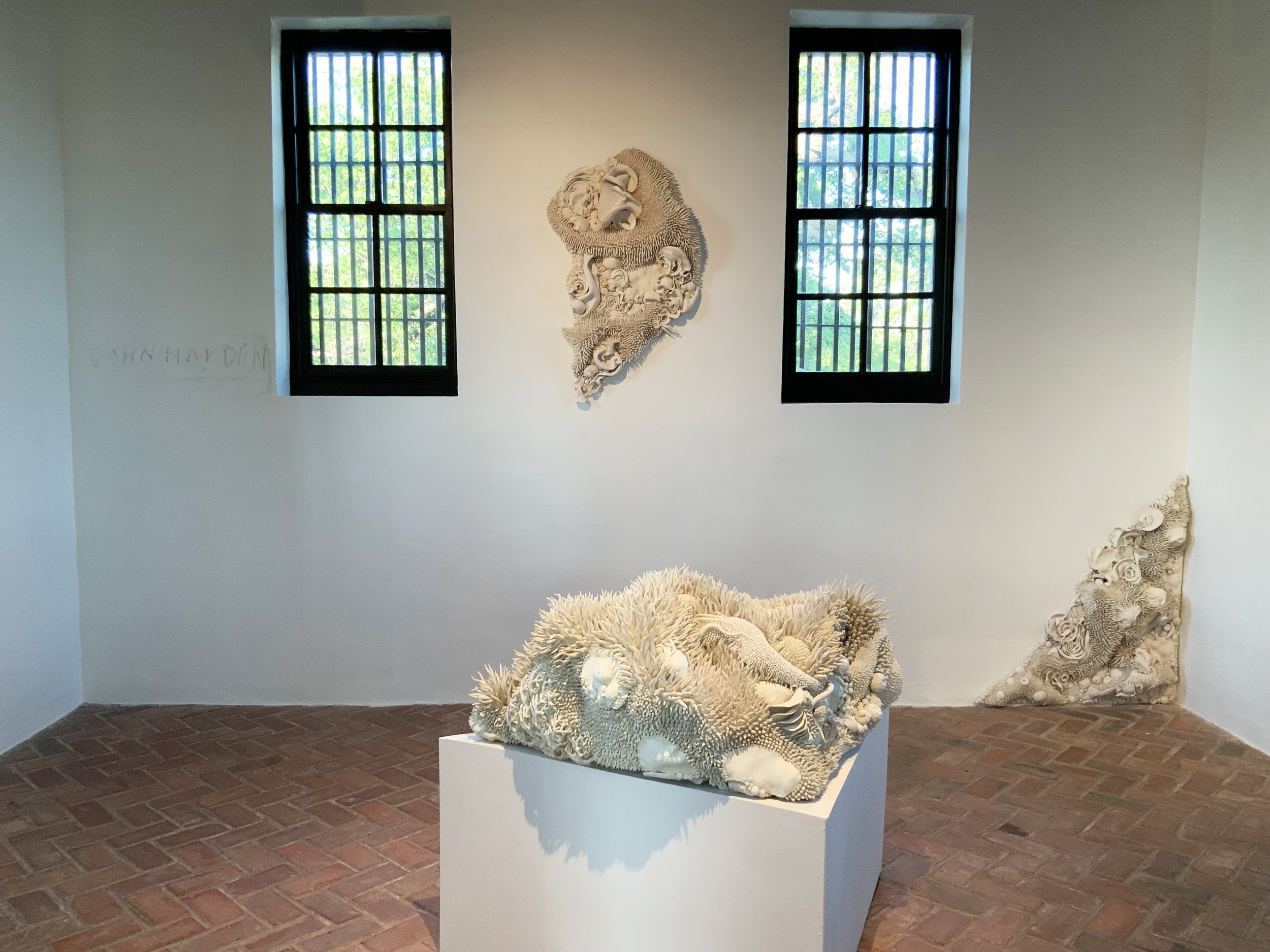
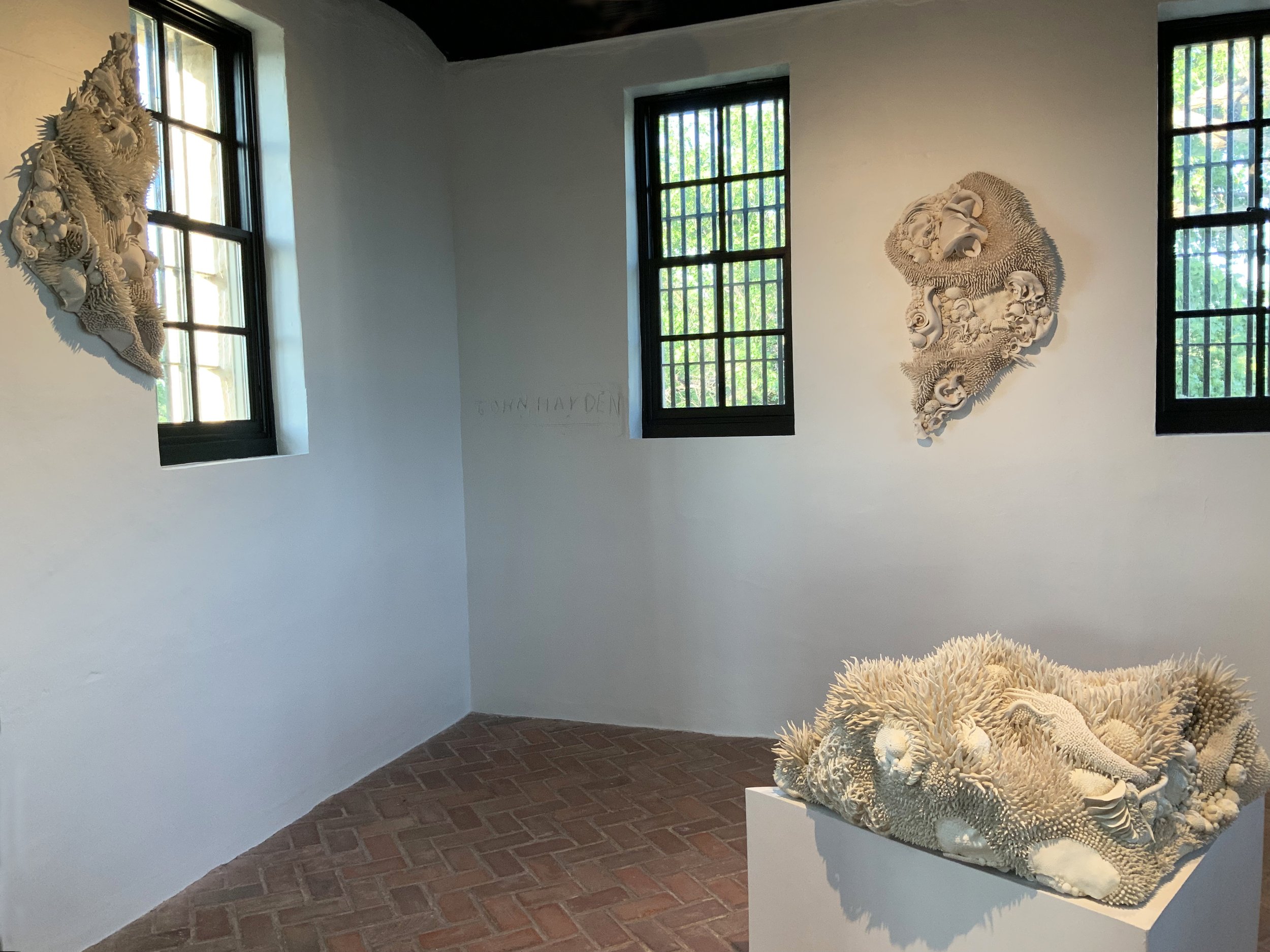
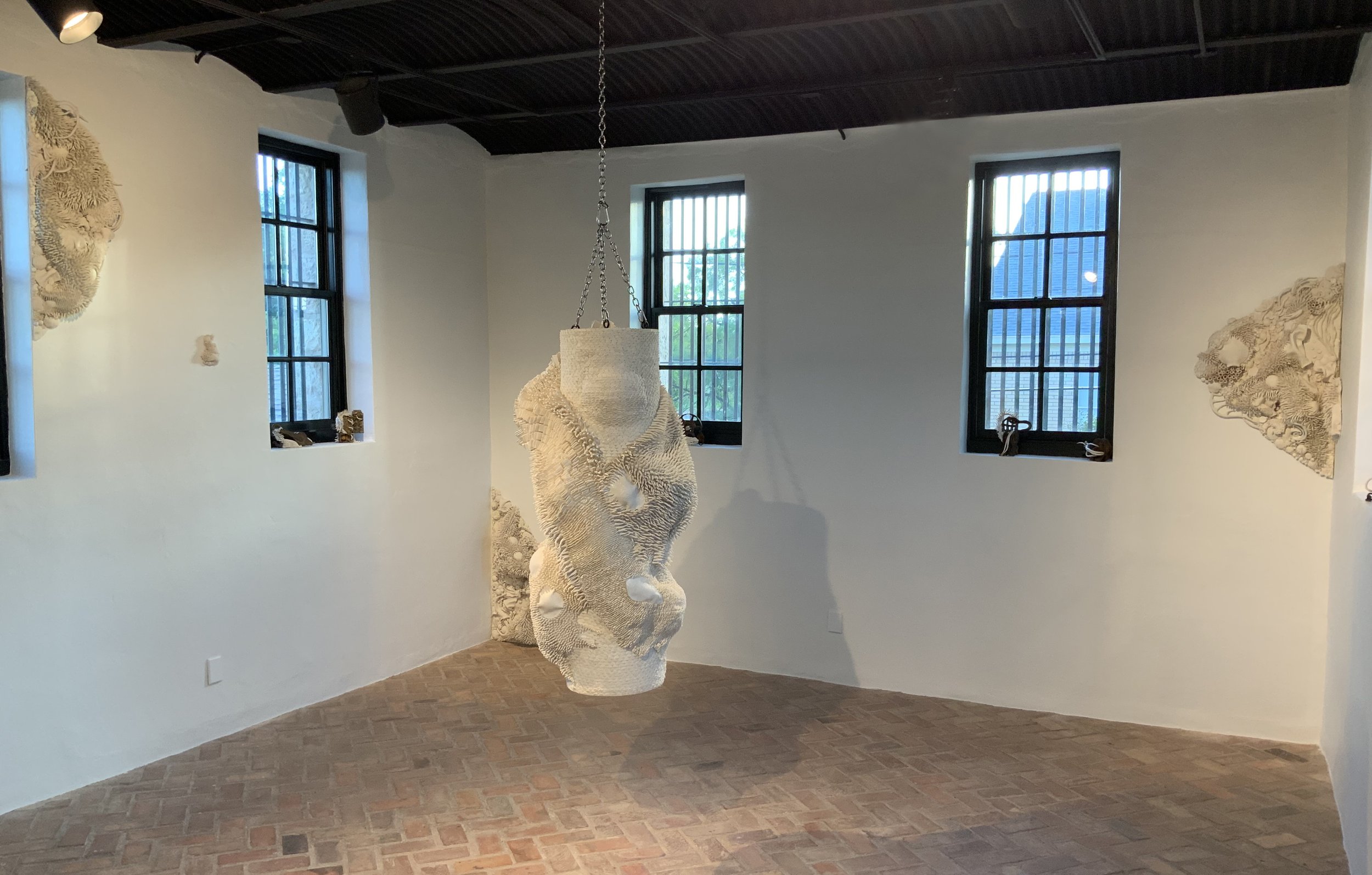
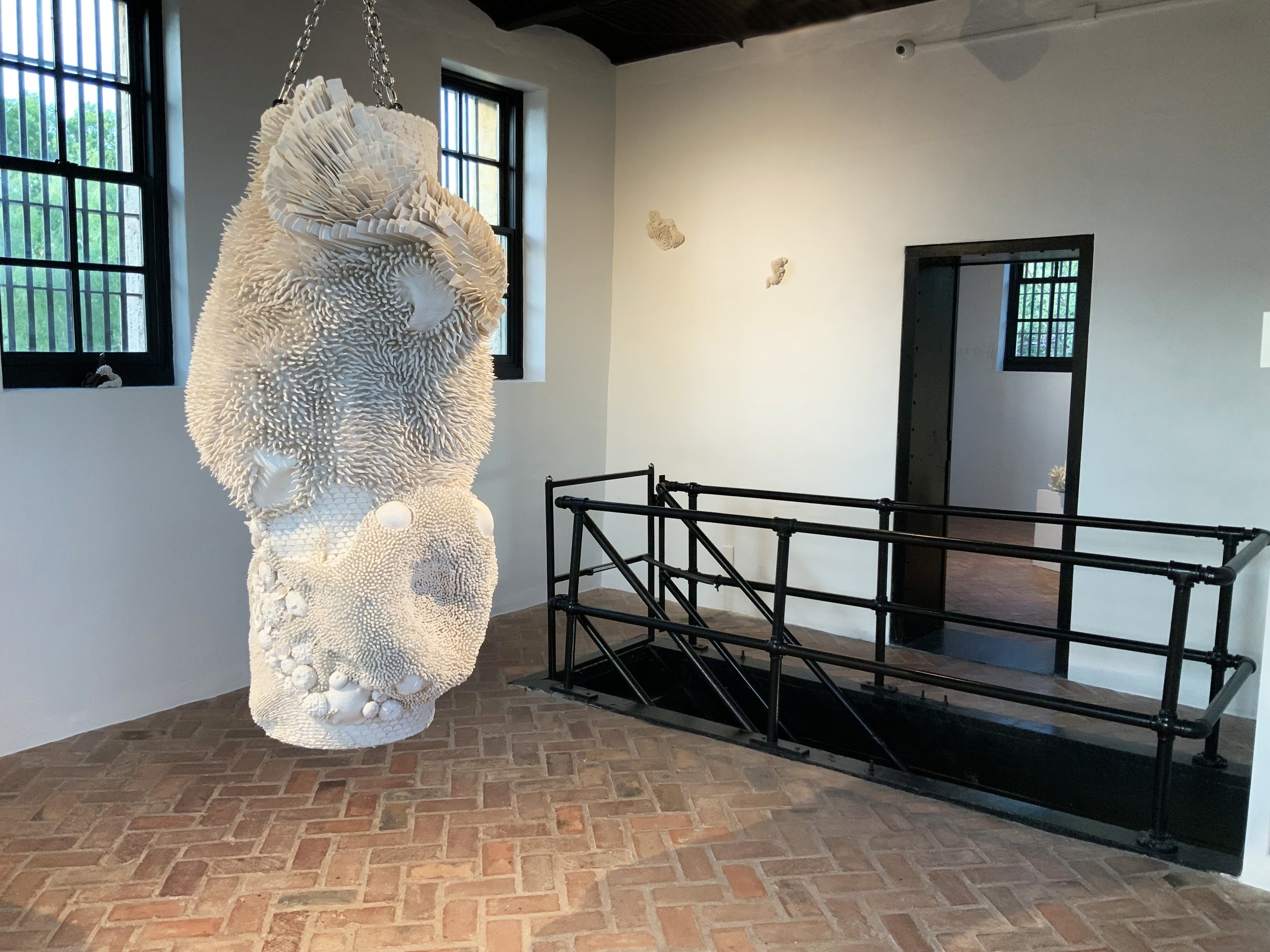
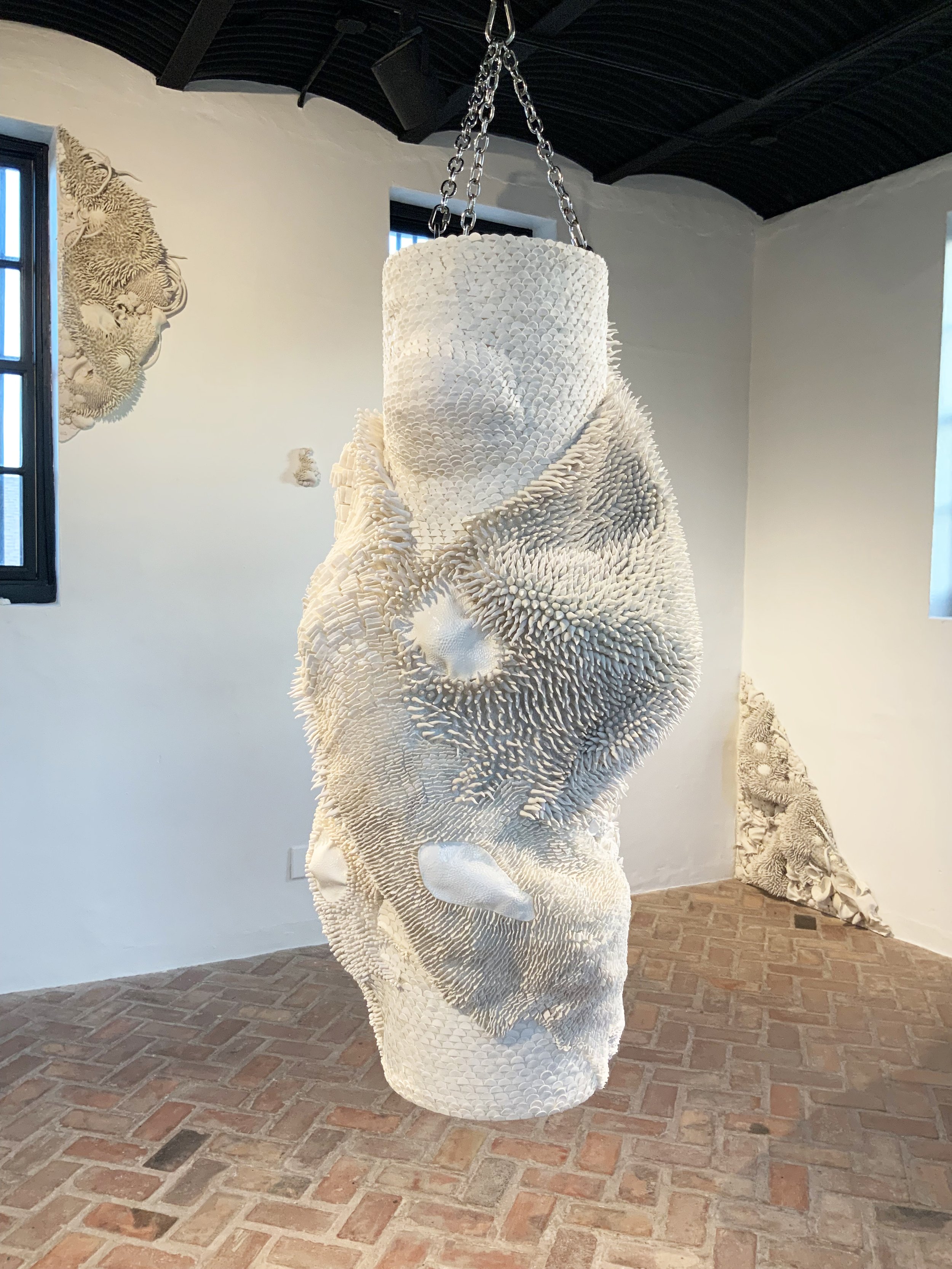
Patrick Kelly, OJAC Director and Curator, interview with artist Saba Besier (May 2025)
PK: I often ask artists if they are willing to share a little about their upbringing. Do you mind sharing where you were raised and/or things you believe shaped you as an artist and the work you currently do?
SB: My childhood years were spent growing up in North Dakota and my upbringing involved quite a bit of travel from the US back to Pakistan to visit family. We did this often and visited different countries along the way, taking either the eastern or western route. While visiting new countries, the first thing I would notice is how different the terrain, trees, fauna and even animals were from place to place. Since the plains are very flat, the difference in nature was very pronounced to me. The most profound was a visit to Polynesia where I saw a vivid glimpse of sea life in a glass bottom boat. It shocked me how bizarre, surreal and artistic life in the ocean can be. My fascination has never ceased, and my concern for their survival grew.
My father heavily influenced my growth and interest in nature as a subject for my work. As far back as I can remember, whenever he was off call as a physician, he was developing Cibachrome images in his darkroom of objects from nature in various life cycles and often on an almost microscopic level. When my father retired, we collaborated, until his death in 2014.
Lastly, my aesthetic was influenced by the Pakistani textiles I was often exposed to from my mother’s business. Dubka embroidery, specifically, fascinated me, which is an intricate, tightly coiled technique, achieved by overlapping and interlacing threads. This led me to study textiles in London prior to my MFA later at Pratt Institute in New York.
PK: How did you transition from textiles to ceramics?
SB: At 18, my family was living in the Rio Grande Valley and I interned with Plaz, a prominent fashion designer. He discovered me at a local illustration exhibition and as an intern, I created fashion illustrations and textile designs. Plaz wrote an amazing college recommendation for me and I received an Emilio Pucci full tuition scholarship to The American College of Applied Arts in London, UK (now called The American Intercontinental University). My mother encouraged me to pursue a fashion degree focusing on textile design instead of a fine art degree. At the time, she owned a textile importing business and her hope was for me to join her company after graduation.
While I really did not want to study fashion and textiles, between parent pressure, a full scholarship, and the opportunity to live abroad, I moved to London and completed my associates degree. After my fashion degree, I decided to pursue a BFA in Painting and Drawing at University of North Texas and then an MFA in Painting at Pratt Institute. I spent the first 20 years of my art career creating contemporary paintings with hints of antiquity on wood panels using a variety of handmade natural pigments including tea, flowers, henna, and semi-precious minerals. I studied sculpting while at Pratt and always have had an interest in it. As my topic and commentary began to shift towards nature and climate change, I wanted to explore the possibility of working in three dimensions to best represent my vision. I took a two-year hiatus to learn and experiment with various materials, metals, clay bodies, and sculpting techniques. I eventually landed on porcelain as my primary practice with occasional use of precious metal overglazes.
PK: You’ve mentioned your fascination with ocean animals and plants. Are your sculptures “interpretations” of those living things, a visual copy, or hybrid of the two?
SB: My sculptural formations and textures are from my imagination and are my own interpretations of what may exist in the ocean. I do not reference any photography or footage intentionally because I want to keep the mystery of what might exist that we do not yet know about, what could exist through mutation, or what could exist in the future.
PK: Can you briefly describe your Cell Series installation and what you were considering or thinking when you conceived it?
SB: In this installation, I explore and celebrate the concept of oceanic organisms’ ability to adapt, survive, and build bio-diverse habitats on man-made structures, where natural habitats have been eradicated due to pollution, overfishing, coastal development, and climate change.
In Deep Resilience, I have created large central formations in each room which have organic, oceanic-like growth, flourishing all over unnatural geometric shapes representing artificial objects. This idea is carried out throughout the exhibition in various ways. The back walls of the gallery space have growth emerging from the edges and organisms thriving on small iron fragments.
I also wanted to explore the mysterious nature of ocean life. Since we know so little of what really exists in the most extreme depths, I illustrate the possibilities with various pieces that push what we know to what could be. This is demonstrated in some of the formations that mix metal and organic growth together as well as exhibiting science-fiction-like features.
While conceiving this installation, I was interested in creating a message of hope and an observation of the resiliency of nature within my ongoing commentary about the plight of ocean-life.
PK: A related question would be, how do you think these objects will be perceived within the context of a historic jail vs. that of a traditional white cube?
SB: Unlike a traditional gallery space, the antiquity, history, and features like the heavy cell doors and bars of the jail combine with the stark ivory formations to create a haunting atmosphere, emphasizing the deep textures and brittle state of ocean life. Equally, the natural light and intimate space offer a dramatic close-up view of the intense detail, reminding the viewer how mysterious and resilient these magnificent life forms are.
I was inspired by the space to create organic forms that emerge from the corners of the walls and floors as well as from antique iron fragments. They illustrate nature’s ability to create bio-diverse habitats even in the most challenging environments. In an old jail, the impact is far more stirring.


